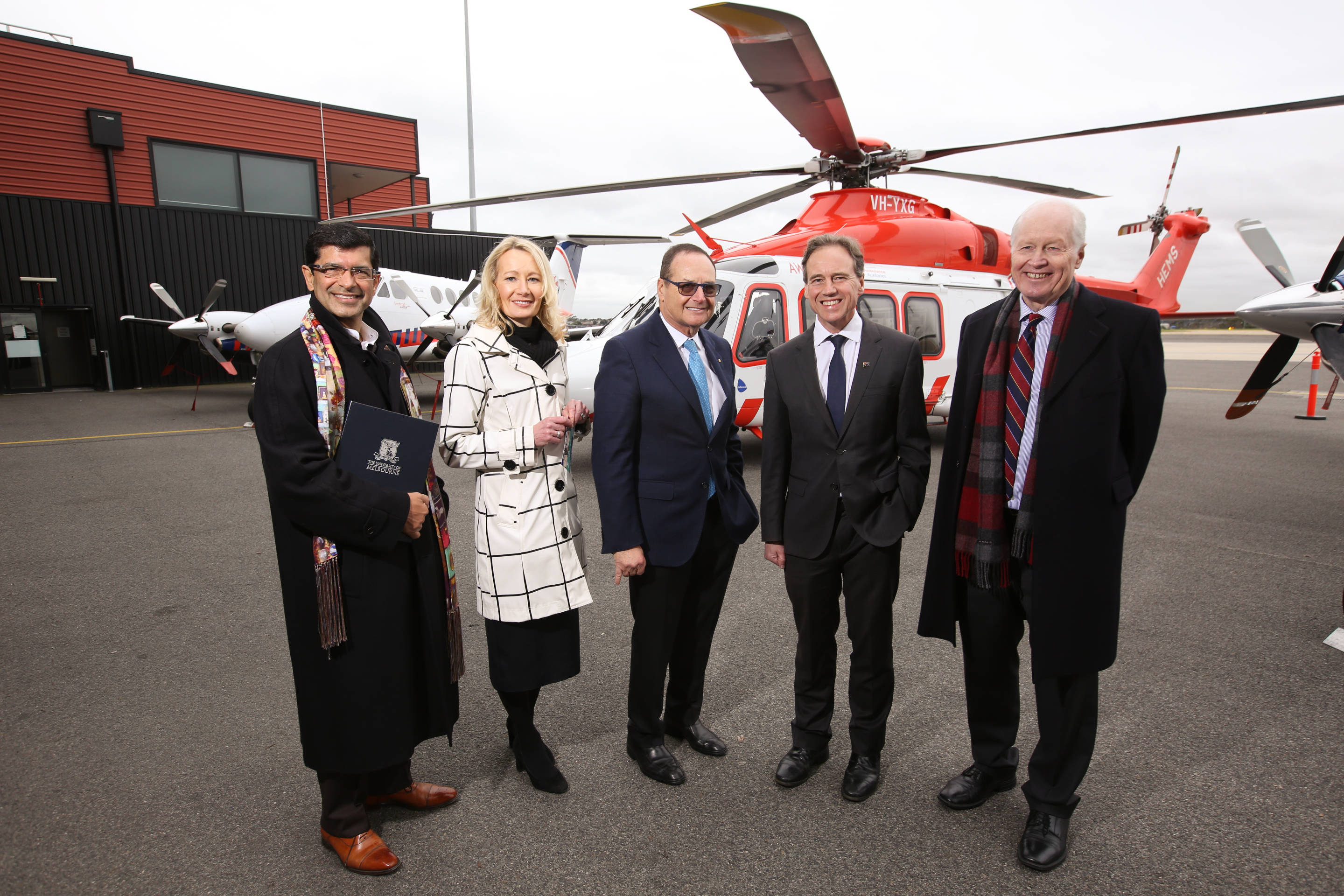
Australia could become home to the world’s first stroke air ambulance. This incredible innovation has the potential to transform access to emergency stroke treatment for people in rural and regional areas.
A team of researchers has been awarded a $1 million grant as part of the Australian Government’s Medical Research Future Fund Frontiers initiative to develop, test and ultimately implement portable brain imaging tools in air and road ambulances, which will allow lifesaving equipment to be available at a moment’s notice.
This research program, to be led by professors Geoffrey Donnan and Stephen Davis at the University of Melbourne and the Royal Melbourne Hospital (RMH), will target the crucial first hour after stroke onset, known as the ‘golden hour’ to give patients the best chance of survival.
The program will bring together experts from more than 30 of Australia’s leading health and academic institutes and charities. The Australian Stroke Alliance will spend a year developing lightweight mobile brain imaging equipment and a telehealth stroke network to transform access to stroke specialists, who are largely based in our cities.
Professor Davis, Director of the Melbourne Brain Centre at RMH said while stroke is highly treatable, time is the most critical element of stroke treatment.
“This service will be key to allowing patients faster access to treatments such as intravenous clot-busting therapy and will dramatically improve stroke outcomes for all Australians,” Professor Davis said.
University of Melbourne Professor of Neurology Geoffrey Donnan said the program will help improve the disparities in clinical outcomes between rural and urban Australians.
“Your postcode should not determine your access to world class stroke treatment,” Professor Donnan said.
“We’re proposing a transformative research program with the aim to reduce mortality and narrow the urban, rural and Indigenous healthcare gaps.”
There are more than 56 000 strokes in Australia each year and around half a million people are living with the effects of stroke.
People in rural and regional areas are 19 per cent more likely to have a stroke and are also more likely to have a poorer outcome.
Stroke Foundation Chief Executive Officer Sharon McGowan said all patients deserve the best chance of surviving and living well after stroke, no matter where they live.
“This research has the potential to save lives and benefit generations to come,” Ms McGowan said.
The program will build on the current Stroke Ambulance (‘Mobile Stroke Unit’), the first of its kind in Australia, which is currently operating in Melbourne.
—
Australian Stroke Alliance
The Australian Stroke Alliance is an extensive partnership network aligned with Medical Research Future Fund (MRFF) strategic priorities. It brings together more than 30 leaders from diverse sectors including key academic, health, consumer and commercial agencies. Our vision is to develop world-first disruptive technologies that will radically transform access to early pre-hospital treatments and dramatically improve stroke outcomes for all Australians.
The Alliance includes: The University of Melbourne, The Royal Melbourne Hospital, Ambulance Victoria, Royal Flying Doctor Service, Council of Ambulance Authorities, RMIT University, Stroke Foundation and Neurosciences Victoria.





